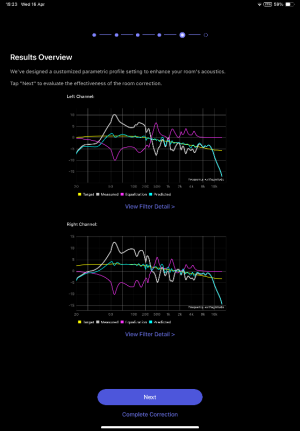EddNog
Major Contributor
I'll take one 10-minute sweep over multitudes of mic moves & sweeps (DIRAC).It seems just like my story, and my conclusions. I like Wiim Ultra a lot and I use it as a pure streamer, and it works well. As soon as I go fiddling with RC hell breaks loose. I must say that Anti-mode sweeps for around 10 minutes, versus 10 seconds with Wiim, but that's what probably takes to get the sound right.
-Ed

